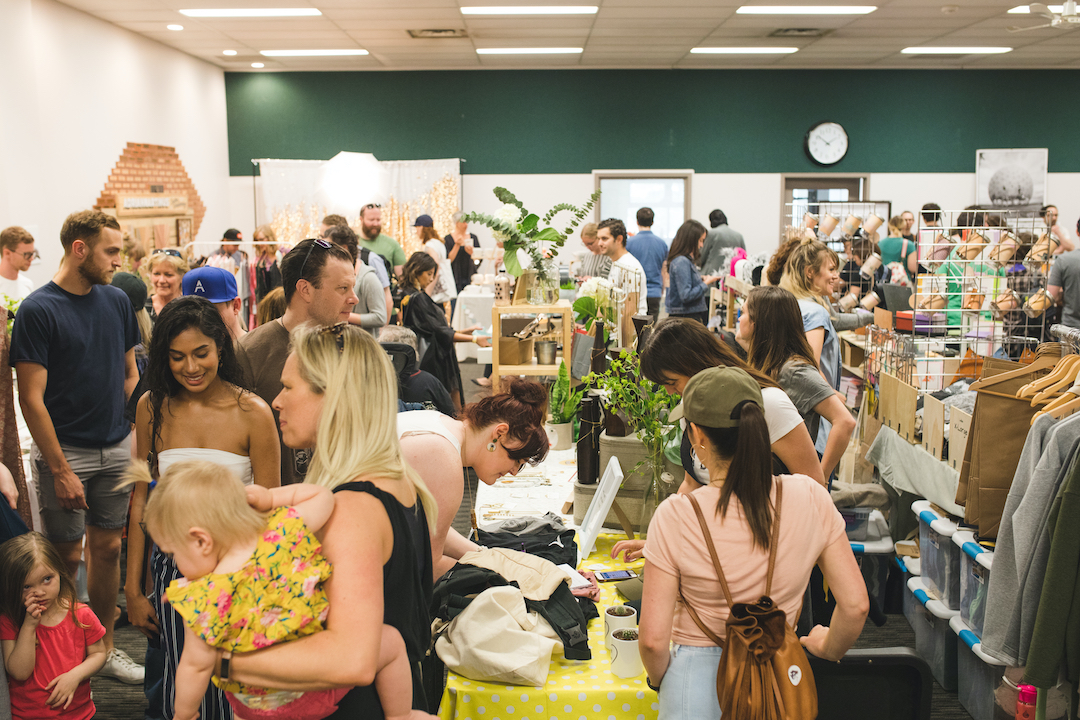Having mentored a replacement market to sustain the legacy of the 16-year-old Royal Bison Art & Craft Fair, longtime lead organizer Vikki Wiercinski is transporting its community-building "DNA" into something called a risograph.
The final Royal Bison takes place over the next two weekends, from Nov. 24 to 26 and from Dec. 1 to 3. Its replacement, OddBird Art & Craft Fair, will debut next May. Wiercinski says the organizers of the new fair helped her plan Royal Bison during the pandemic and are prepared to take the reins.
"I really look forward to seeing how the younger generation sees things, and how they want to change it," Wiercinski, who has led organization of Royal Bison since 2010, told Taproot.
Wiercinski is the creator of Mezzaluna Studio, a stationery and design-goods firm, as well as a freelance graphic designer. In 2010, she inherited oversight of Royal Bison from creator and fellow print artist Raymond Biesinger, when he moved to Montreal.
She says she's now moving on from Royal Bison partly because 13 years "is a long time to do anything," but also because she believes the fair will benefit from change, and because she wants to focus on her own practice — including the newly founded Rabarbar Press.
"We just all agreed that it would be really nice to start something new, with Bison DNA," Wiercinski said of Rabarbar. "I think we can be guilty of maintaining things exactly the way they are for decades around here, or anywhere really."
Rabarbar is all about the risograph, a high volume, low cost printing machine originally created in Japan, which blends elements of photocopying and printmaking.
During a recent trip to Japan, Wiercinski says she fell madly in love with the risograph at Hand Saw Press. She documented the trip in vivid detail on Instagram.
In a small-world moment, Wiercinski met Hand Saw member Le Lin, who originally hails from Calgary, during her visit. "I was like, 'Why leave Alberta? I'm in the middle of Tokyo, and Alberta has followed me here. It's really funny.' We actually knew people in common, which is really wild."
Wiercinski says creatives are reimagining the once business-focused risograph. "Somewhere around 10 years ago, artists started realizing that these are incredible silkscreen machines," she said. "It's basically a repurposing and kind of a printer-hacking."

A zine created with a risograph will be distributed at the final Royal Bison Art & Craft Fair, which runs on Nov. 24 to 26 and Dec. 1 to 3. It's the first taste of long-time organizer Vikki Wiercinski's new project, Rabarbar Press. (Aspen Zettel)
Wiercinski said Royal Bison was a tool to build community, and that Rabarbar and its risograph will carry that service forward in a new form.
"There has never been a publicly accessible risograph in Edmonton," she said. "The workshops are the community piece. Over the years, through Royal Bison, I have learned that I really enjoy building community, and especially around art. I think Rabarbar Press will get to do a little bit of that over time as well, which delights me."
Some workshops include Risograph 101: Drawing + Collage Workshop, on Jan. 13 and 24, and Holiday Wrapping Paper: Design Print your own!, taking place Dec. 6 and 13.
Wiercinski said Royal Bison organizers built community through much hard work, putting in around 300 hours twice per year. She said she earned only about one third of her total income from this work. Royal Bison's table fees, at $190 per table, per weekend, meant it was one of the most affordable markets for vendors, she added.
"A similar table at a craft fair in another city could be upwards of $300, $400," she said. "When Raymond started this, he called it 'socialistically low table fees.'"
The community building is also as simple as bringing artists and art lovers together into a specific place at a specific time. On this point, Wiercinski said she saw the artisan community grow and change over her years running Royal Bison. "It's so interesting to see," she said. "Royal Bison just kind of naturally existed as a snapshot of what's been going on the last six months in the art and design scene."
Royal Bison takes place at the Old Strathcona Performing Arts Centre. Wiercinski said one of the greatest challenges organizing it has been the notion of scaling up.
"Edmonton has a severe lack of affordable, centrally located venues that are of a certain size," she said. "There's more demand than we can supply. Ultimately, we always have a kilometre-long wait list (for vendors), and I'm sure more people would like to come then we're able to house in the venue."
On the flip side, she said Royal Bison was never intended to be a mega-market.
"We've always stayed in the same venue, and at the same size of roughly 70 vendors a weekend," she said. "I think that's kept the curation really tight, and kept the fair from becoming overwhelming in size. I think customers have enough to absorb in an afternoon; you don't leave dazed and confused."
Wiercinski's new risograph work will collide with the Royal Bison in the form a riso-printed zine, which will be distributed at the holiday markets.
"That has every poster in it and every tote bag and every organizer name in there," she said. "People will be able to take home a little keepsake from Royal Bison."
